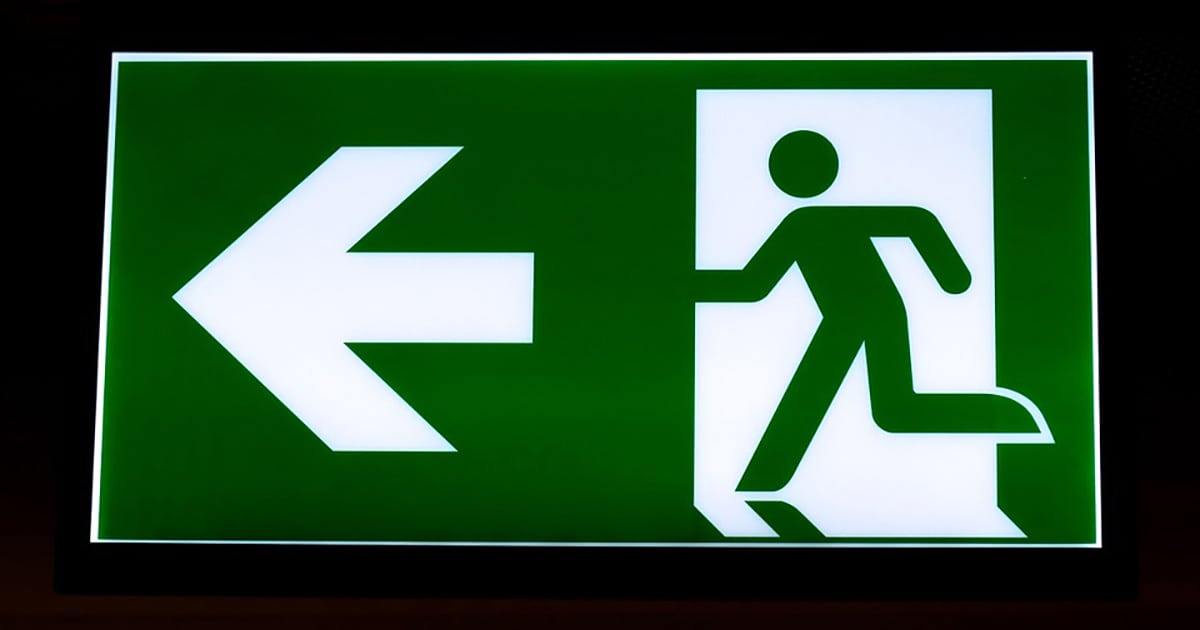Why is emergency lighting so important when escaping a fire?
In the face of a big fire, the difference between life and death can often hinge on a matter of moments. When flames hit the walls, smoke engulfs the air, and panic takes hold, having a clear and well-illuminated path to safety becomes paramount. This is where emergency lighting proves its critical significance, serving as a guiding light for those escaping the clutches of fire. In this article, we delve into the reasons why emergency lighting is so important during fire escapes and how it plays a pivotal role in saving lives.
Navigating Through the Darkness
As the flames surge and smoke thickens, visibility becomes severely impaired. The familiar layout of a building becomes unrecognizable, and the pathways to exits are shrouded in darkness. In these dire situations, emergency lighting steps in as a beacon of hope. Its purpose is to maintain visibility by illuminating escape routes, exit signs, and critical areas even in the absence of regular lighting. This ensures that individuals can confidently navigate through the chaos and find their way to safety.
Counteracting Panic and Chaos
Emergencies evoke strong emotions, often leading to panic and chaos. People’s ability to think clearly and make rational decisions diminishes as fear takes over. In these instances, emergency lighting not only guides but also calms. A well-lit path and clearly visible exit signs provide a sense of direction, helping to mitigate panic and enabling individuals to focus on their escape rather than succumbing to the chaos. It serves as a visual reassurance that a way out is within reach.
Accessibility for All
One of the core principles of emergency preparedness is ensuring that everyone, regardless of their physical abilities, can safely evacuate a building during a crisis. Emergency lighting plays a crucial role in fulfilling this principle. It aids individuals with mobility challenges, visual impairments, or other disabilities in understanding the layout of the space and locating accessible exits. By ensuring equitable access to escape routes, emergency lighting ensures that no one is left behind.
Overcoming Power Outages
Fires often lead to power outages, rendering regular lighting systems useless. This is where emergency lighting, typically backed by battery power or other alternative sources, shines. Even in the absence of electricity, these lights continue to guide people to safety. In situations where darkness and confusion reign, having a reliable and independent source of illumination can make all the difference between escape and tragedy.
Compliance with Regulations
Safety regulations and building codes mandate the installation of emergency lighting systems in commercial and public spaces. These regulations are not arbitrary; they are rooted in a deep understanding of the critical role emergency lighting plays in saving lives. Non-compliance with these regulations not only puts lives at risk but also exposes building owners to legal liabilities. By adhering to these regulations, building owners not only demonstrate their commitment to safety but also contribute to the overall well-being of their occupants.
Rapid Evacuation and First Responder Support
During a fire, every second counts. Rapid evacuation is imperative to minimize the risks to life and property. Emergency lighting expedites this process by providing clear and continuous guidance. Furthermore, emergency responders, such as firefighters and paramedics, benefit from a well-illuminated environment. They can swiftly navigate the premises, locate individuals in need of assistance, and carry out their operations efficiently when emergency lighting is in place.
Preventing Congestion and Bottlenecks
In the absence of proper illumination, people tend to cluster around exits, creating congestion and bottlenecks that hinder escape. Emergency lighting disperses this congestion by directing individuals toward alternate routes and lessening the likelihood of stampedes or other dangerous scenarios. By evenly distributing occupants along escape routes, emergency lighting enhances the overall efficiency of evacuation efforts.
Maintaining Evacuation Route Integrity
In the chaos of a fire, the structural integrity of a building can be compromised. Emergency lighting ensures that occupants can safely traverse through areas that might have been damaged or are otherwise hazardous. This prevents people from inadvertently walking into danger zones and helps them stay on the safest possible path to exit.
In conclusion, the critical importance of emergency lighting during fire escapes cannot be overstated. It serves as a lifeline that guides individuals through the darkness, counteracts panic, ensures equitable access, overcomes power outages, and assists both occupants and first responders in navigating treacherous conditions. Moreover, compliance with safety regulations and building codes reinforces the significance of emergency lighting in safeguarding lives. As technology continues to advance, so too will the capabilities of emergency lighting systems, further enhancing their role in emergency preparedness and response. When the stakes are as high as they are during a fire, having a well-illuminated path to safety can mean the difference between tragedy and survival.

